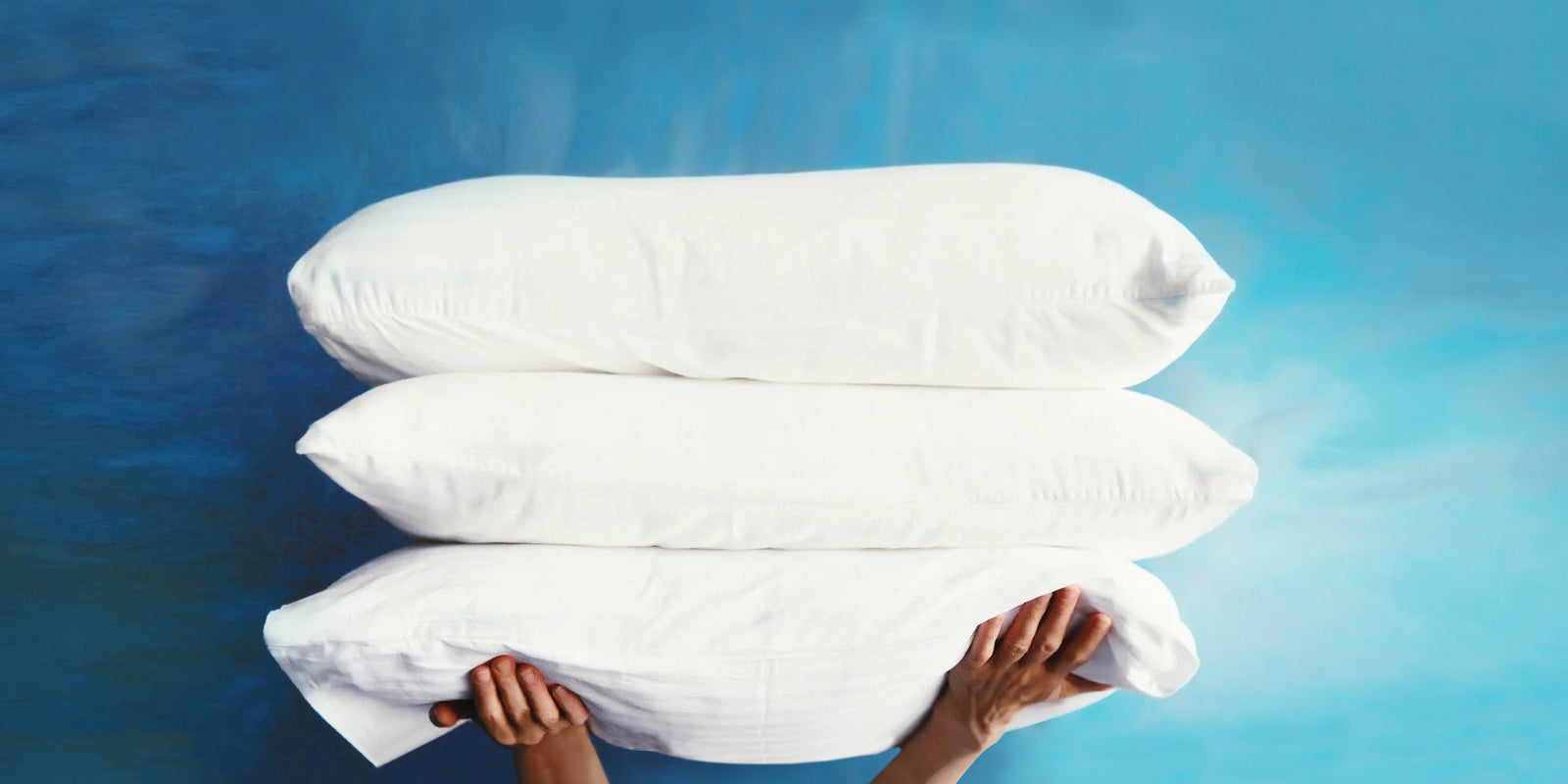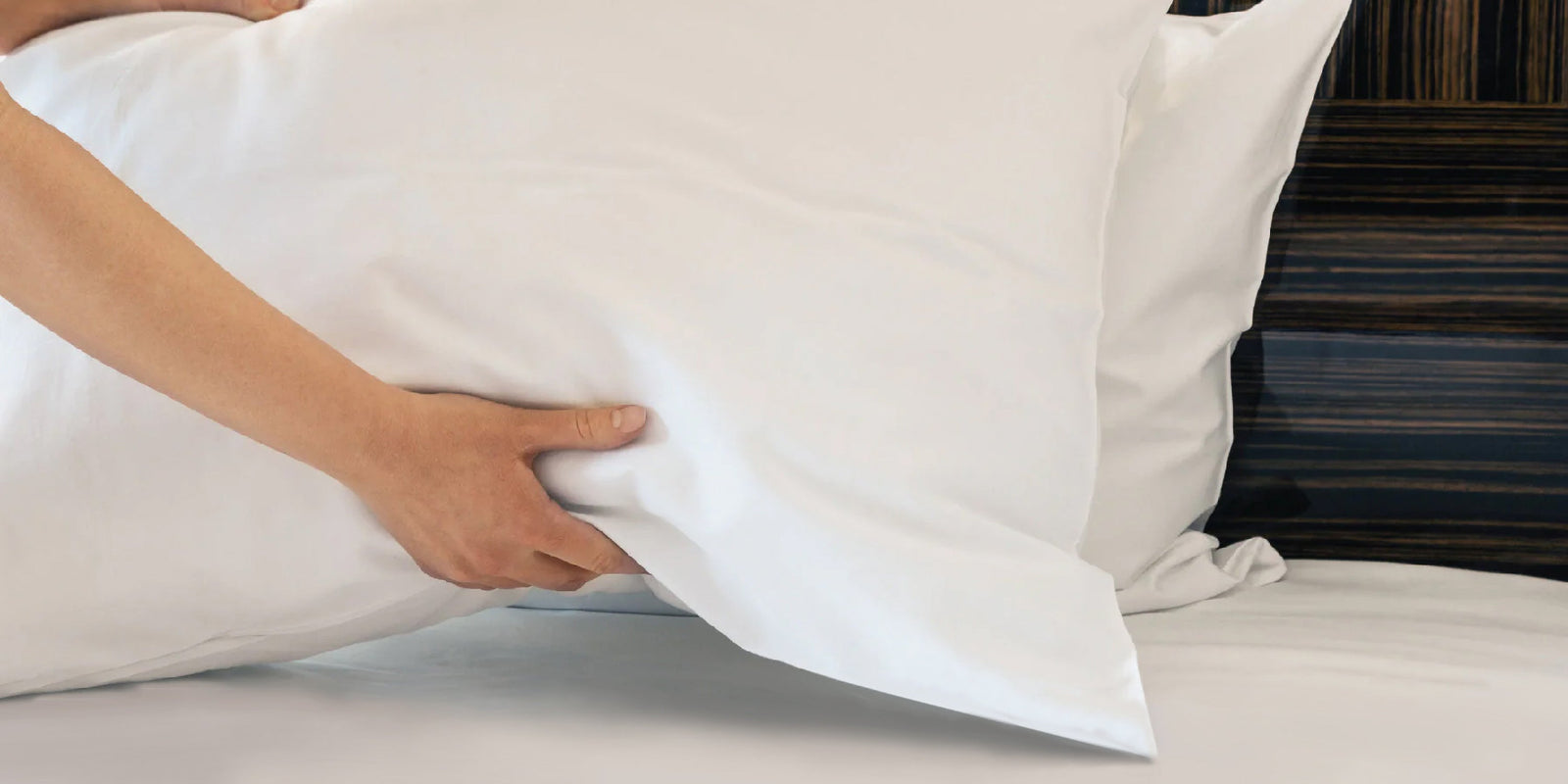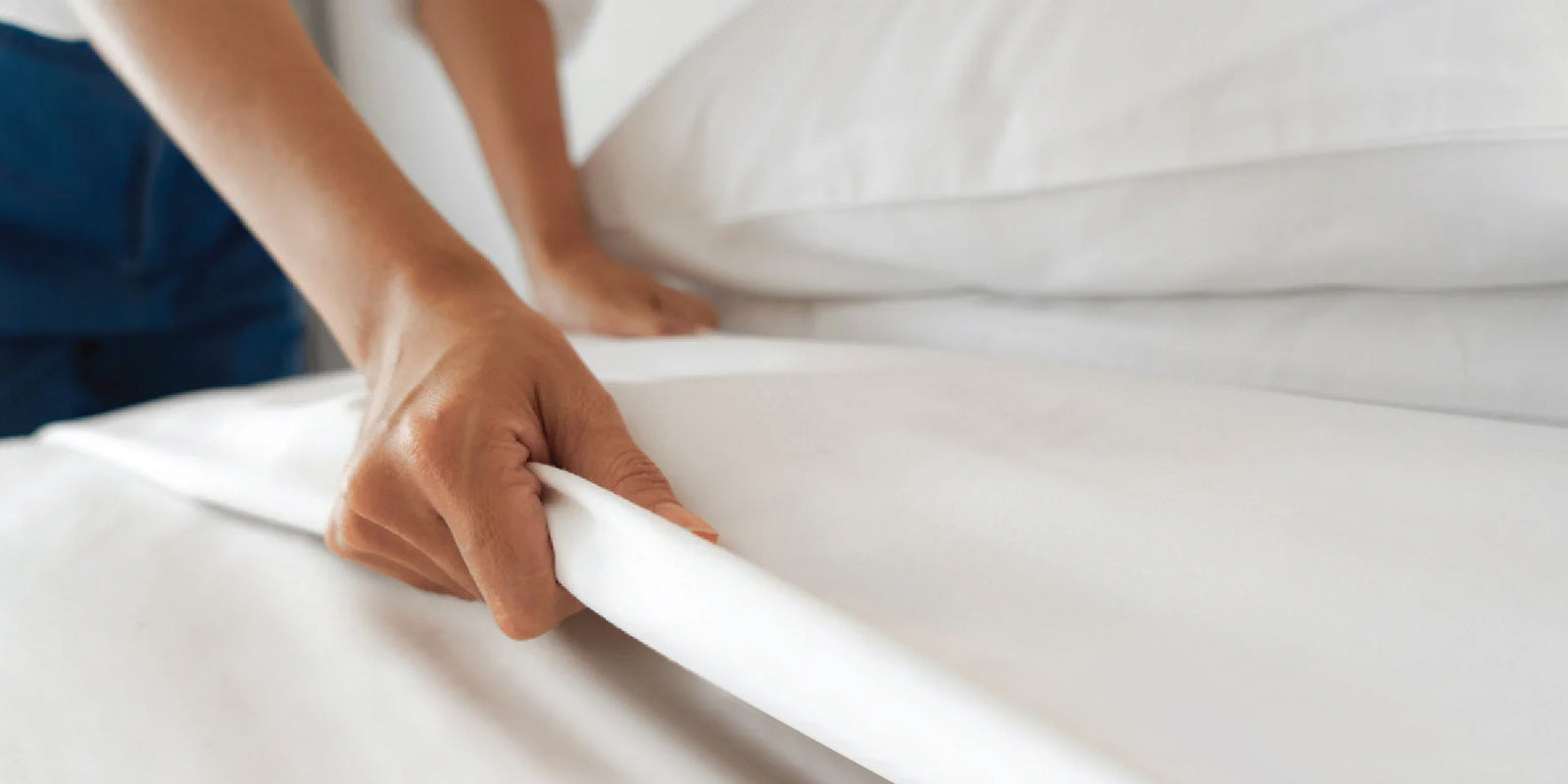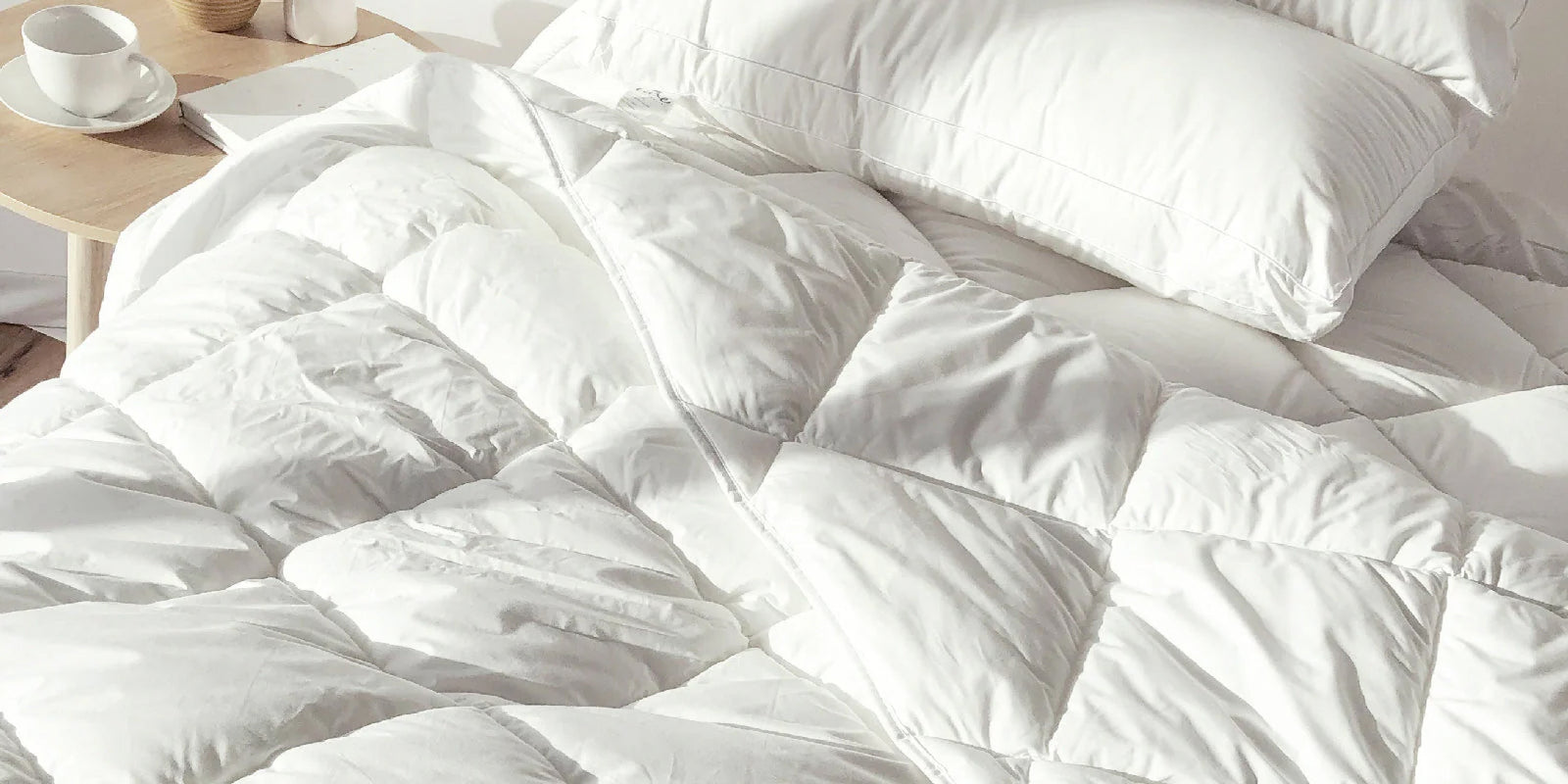Pillows are more than just accessories for a good night's sleep; they play a vital role in providing comfort and support that you need to feel well-rested. However, over time, pillows accumulate dust, sweat, oils, and even bacteria, which can come to impact your sleep quality and by extension your broader health!
A good pillow doesn’t always come cheap, so you want to ensure you maximise your pillow’s lifespan. Regularly washing your pillows can help to do this. Read on to find out more on how to properly keep your pillow clean!
How Often Should You Wash Your Pillow?
As dead skin, dust mites and other detritus can build up on and inside your pillows, it's important to make sure they receive just as much attention as anything else on your bed. This means washing your actual pillow, not just pillow protectors and pillowcases!
How often you wash your pillow depends on a few variables, like your area’s climate and how dirty it gets. For example, if you live in a hot or humid state such as Queensland, you’ll need to wash your pillow more often than someone in Tasmania. Likewise, if you breathe out of your mouth, sleep on your front or go to bed with wet hair, your pillow will require more washing. As a rule of thumb, at least every six months is a good place to start but you might want to consider doing it monthly if any of the above apply to you.
Now that’s sorted, here's a comprehensive guide on how to properly wash your pillows:
1. Check the Pillow Care Label
Before you start the washing process, take a moment to check the care label on your pillows. Some pillows are machine washable, while others - such as memory foam and latex pillows - might require specific care. We recommend always following the manufacturer's guidelines to prolong your pillows’ lifespan.
The symbols on the care label should give you an indication of how to best look after your pillow.
2. Determine Pillow Type
As already hinted at, different pillow types require different washing methods, so figuring this out is paramount to the cleaning process. If your pillow filling isn’t written on the care label, you’ll have to get a bit creative to figure this out yourself.
You should be able to determine if a pillow is feather, down or a feather/down blend fairly easily. Down will be unmistakably lightweight and fluffy, whereas you’ll be able to feel the quills of any feather by pinching the pillow between your fingers. Moreover, down and feather pillows will fluff up more than any other filling type, so if your pillow requires a good shake, then it’s most likely feather.
The giveaway to memory foam and latex pillows is their signature bounce and even filling. On the other hand, while also bouncy, anything containing wool will be heavier and a bit rougher to the touch. Polyester pillows are rather similar to wool, but are generally not as heavy.
Down/Feather Pillows
Generally, down and feather pillows can be machine washed, but they might need extra care to prevent clumping. More information on how to machine wash your pillows later!
Memory Foam Pillows
Memory foam pillows are not machine washable, as machine washing will cause them to lose their shape. Instead, spot cleaning is recommended to avoid damaging the foam. Similarly, you should avoid placing memory foam pillows in the sun, as the heat will damage the foam.
Polyester Pillows
Most polyester-filled pillows are machine washable and easier to care for. This makes them a good choice if you see yourself wanting to wash your pillow frequently.
3. Pretreat Any Stains
Before washing, we recommend pretreating any visible stains with a mild detergent or a stain remover. You’ll want to gently dab the stain without rubbing it vigorously, which can spread the stain or damage the pillow’s fabric casing.
4. Machine Washing
Even if machine washing is okay for your pillow, you’ll still want to be careful not to overdo it! What this means is setting your washing machine to the ‘delicate' or ‘gentle' wash cycle, and using a mild liquid soap to keep your pillow smelling (and looking) fresh.
For machine washable pillows, follow these guidelines:
Use a Mild Detergent: Opt for a gentle detergent and avoid using bleach or harsh chemicals that can damage the pillow fibres - or worse, your health! You do place your face on your pillow after all.
Load Balance: To maintain a balanced load in the washing machine, keep the load at two pillows maximum.
Choose the Right Settings: Most pillows will benefit from a gentle cycle with warm water for most pillows: 30-40° is best to balance the needs of cleaning without damaging the pillow itself. However, always refer to the care label for specific temperature recommendations.
Rinse Thoroughly: Ensure the pillows are thoroughly rinsed to remove all detergent residue. Consider an extra rinse cycle to make sure all soap is removed.
5. Drying Process
Again, pillows with different fillings have different care instructions, so when it comes to drying your pillow, it’s best to refer back to the care instructions. Generally speaking though, we don’t recommend putting your pillow in a tumble dryer as this can very easily damage your pillow beyond repair.
For best results, we advise you to dry your pillow by placing it on a flat surface in the shade. Keeping it flat will help your pillow bounce back to its regular shape. Before placing it back on your bed or into storage, it’s absolutely vital to ensure your pillow is 100% dry to its core, to prevent mould or mildew growth. Exactly how long your pillow takes to dry will depend on the fibre it is filled with.
Keeping Your Pillow Clean
There are numerous things you can do to extend the lifespan of your pillows.
Use Pillow Protectors
Consider using pillow protectors or an extra pillowcase to shield your pillows from sweat, oils, and stains. These are much more convenient to wash, saving you both time and money in the long run.
Fluff Daily
Fluffing your pillows daily helps maintain their shape and prevents clumping of the filling.
Regularly Air Your Pillows
Propping your pillows on a clotheshorse in the breeze can work wonders to enhance its freshness. Just be careful not to leave your pillow (particularly memory foam) in direct sunlight. Also consider the humidity of your local climate, as you don’t want to inadvertently encourage mould or mildew!
How to Remove Yellow Stains
The yellowing of your pillow comes from a mix of sweat, saliva, and natural oils from your skin and hair seeping into it. While it's common for pillows to stain, it can be frustrating when they turn yellow shortly after purchase. Luckily, it’s easy to remove the yellowing with a pre-soak before washing.
But, before tackling the stains, it's crucial to ensure your pillow can be safely machine washed. If so, you’ll want to soak your pillow in a bathtub or bucket with the following: 1 cup of powdered laundry detergent, 1 cup of bleach, 1 cup of dishwasher detergent, and ½ cup of borax.
Allowing the mixture to work on the stains for an hour will make them easier to remove during the wash cycle. Let the pillow soak for an hour, ensuring it gets fully saturated by flipping it halfway through. After the hour, wash the pillow using hot water and an extra rinse cycle to ensure a thorough clean. Finally, let your pillow air dry like normal.
When Should You Replace Your Pillow?
Years ago, Tontine made headlines by introducing date stamps on their pillows to make it easy to remember the ideal time for a replacement. Besides any date-based metrics, there are a number of factors that go into this decision - check out our Pillow Expiration Guide for more information.
Regularly washing your pillows not only keeps them clean and fresh but also contributes to a healthier sleep environment. Always refer to the care label and follow manufacturer instructions for the best washing practices. By maintaining your pillows properly, you'll ensure a more comfortable and hygienic sleep experience, night after night.
Remember, a little care goes a long way in preserving the quality and comfort of your pillows. Rest well!
Check out our Pillow Care Guide for more tips.










